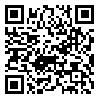Fri, Dec 12, 2025
Articles In Press
Back to the articles list |
Back to browse issues page
1- Jamia Hamdard Deemed University, New Delhi, India.
Abstract: (532 Views)
Purpose: Chronic low back pain (CLBP) is often related with both physical disability and mental health impairments such as anxiety, depression, and fatigue. While manual therapy and aerobic exercise independently demonstrate benefits for physical symptoms, few studies investigate their combined effects on psychological well-being, leaving a critical gap in evidence for multimodal rehabilitation strategies. Existing research prioritizes pain and disability outcomes, with psychological factors often assessed secondarily.
Methods: A preliminary trial was conducted with 40 participants (aged 32–49 years) diagnosed with CLBP. Participants were randomly allocated to either an intervention group (group-1) receiving manual therapy and aerobic training, or a control group (group 2) performing self-directed exercises after screening for eligibility based on inclusion and exclusion criteria. Pain (Numerical Pain Rating Scale - NPRS), perceived fatigue (Modified Borg Scale - MRPE), and mental health status (Hospital Anxiety and Depression Scale - HADS) were assessed pre- and post-intervention over four weeks.
Results: Compared with the control group, the intervention group achieved greater reductions in pain intensity, perceived exertion, and psychological distress. ANCOVA adjusting for baseline values confirmed statistically significant between-group differences across all outcomes (p < 0.01). Within-group analyses indicated improvements from baseline to post-intervention in both groups, with larger changes observed in the intervention arm.
Conclusion: Combining manual therapy and aerobic training may be an effective strategy for improving physical and psychological outcomes in middle-aged individuals with CLBP. This supports the need for integrated, multimodal rehabilitation protocols.
Methods: A preliminary trial was conducted with 40 participants (aged 32–49 years) diagnosed with CLBP. Participants were randomly allocated to either an intervention group (group-1) receiving manual therapy and aerobic training, or a control group (group 2) performing self-directed exercises after screening for eligibility based on inclusion and exclusion criteria. Pain (Numerical Pain Rating Scale - NPRS), perceived fatigue (Modified Borg Scale - MRPE), and mental health status (Hospital Anxiety and Depression Scale - HADS) were assessed pre- and post-intervention over four weeks.
Results: Compared with the control group, the intervention group achieved greater reductions in pain intensity, perceived exertion, and psychological distress. ANCOVA adjusting for baseline values confirmed statistically significant between-group differences across all outcomes (p < 0.01). Within-group analyses indicated improvements from baseline to post-intervention in both groups, with larger changes observed in the intervention arm.
Conclusion: Combining manual therapy and aerobic training may be an effective strategy for improving physical and psychological outcomes in middle-aged individuals with CLBP. This supports the need for integrated, multimodal rehabilitation protocols.
Keywords: multimodal therapy, rehabilitation, manual therapy, chronic low back pain, aerobic exercise, mental health, anxiety, depression
Type of Study: Research |
Subject:
Sport injury and corrective exercises
Received: 2025/06/2 | Accepted: 2025/10/6
Received: 2025/06/2 | Accepted: 2025/10/6
Send email to the article author
| Rights and permissions | |
 |
This work is licensed under a Creative Commons Attribution-NonCommercial 4.0 International License. |





